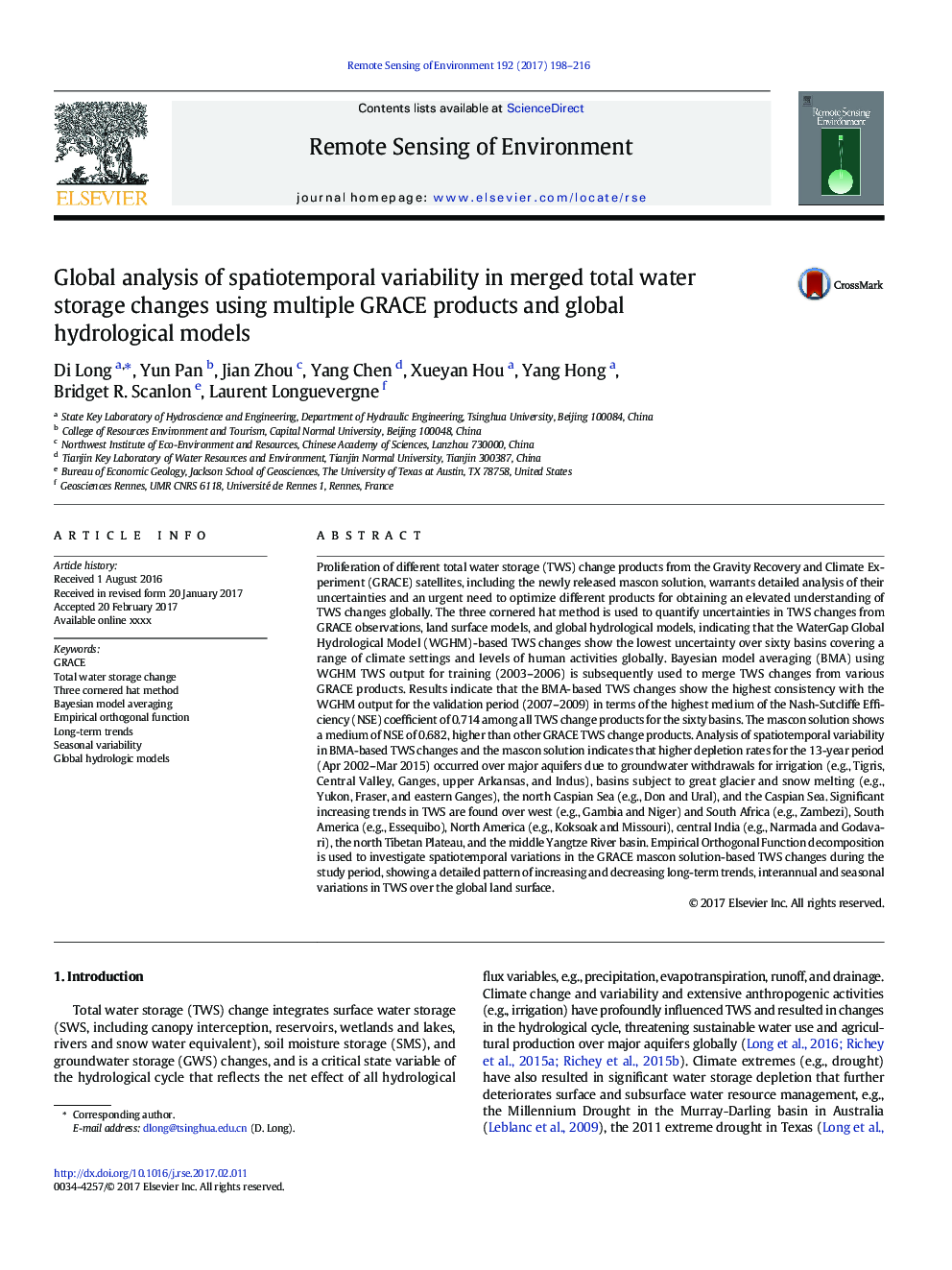| کد مقاله | کد نشریه | سال انتشار | مقاله انگلیسی | نسخه تمام متن |
|---|---|---|---|---|
| 5754880 | 1621208 | 2017 | 19 صفحه PDF | دانلود رایگان |
عنوان انگلیسی مقاله ISI
Global analysis of spatiotemporal variability in merged total water storage changes using multiple GRACE products and global hydrological models
دانلود مقاله + سفارش ترجمه
دانلود مقاله ISI انگلیسی
رایگان برای ایرانیان
کلمات کلیدی
موضوعات مرتبط
مهندسی و علوم پایه
علوم زمین و سیارات
کامپیوتر در علوم زمین
پیش نمایش صفحه اول مقاله

چکیده انگلیسی
Proliferation of different total water storage (TWS) change products from the Gravity Recovery and Climate Experiment (GRACE) satellites, including the newly released mascon solution, warrants detailed analysis of their uncertainties and an urgent need to optimize different products for obtaining an elevated understanding of TWS changes globally. The three cornered hat method is used to quantify uncertainties in TWS changes from GRACE observations, land surface models, and global hydrological models, indicating that the WaterGap Global Hydrological Model (WGHM)-based TWS changes show the lowest uncertainty over sixty basins covering a range of climate settings and levels of human activities globally. Bayesian model averaging (BMA) using WGHM TWS output for training (2003-2006) is subsequently used to merge TWS changes from various GRACE products. Results indicate that the BMA-based TWS changes show the highest consistency with the WGHM output for the validation period (2007-2009) in terms of the highest medium of the Nash-Sutcliffe Efficiency (NSE) coefficient of 0.714 among all TWS change products for the sixty basins. The mascon solution shows a medium of NSE of 0.682, higher than other GRACE TWS change products. Analysis of spatiotemporal variability in BMA-based TWS changes and the mascon solution indicates that higher depletion rates for the 13-year period (Apr 2002-Mar 2015) occurred over major aquifers due to groundwater withdrawals for irrigation (e.g., Tigris, Central Valley, Ganges, upper Arkansas, and Indus), basins subject to great glacier and snow melting (e.g., Yukon, Fraser, and eastern Ganges), the north Caspian Sea (e.g., Don and Ural), and the Caspian Sea. Significant increasing trends in TWS are found over west (e.g., Gambia and Niger) and South Africa (e.g., Zambezi), South America (e.g., Essequibo), North America (e.g., Koksoak and Missouri), central India (e.g., Narmada and Godavari), the north Tibetan Plateau, and the middle Yangtze River basin. Empirical Orthogonal Function decomposition is used to investigate spatiotemporal variations in the GRACE mascon solution-based TWS changes during the study period, showing a detailed pattern of increasing and decreasing long-term trends, interannual and seasonal variations in TWS over the global land surface.
ناشر
Database: Elsevier - ScienceDirect (ساینس دایرکت)
Journal: Remote Sensing of Environment - Volume 192, April 2017, Pages 198-216
Journal: Remote Sensing of Environment - Volume 192, April 2017, Pages 198-216
نویسندگان
Di Long, Yun Pan, Jian Zhou, Yang Chen, Xueyan Hou, Yang Hong, Bridget R. Scanlon, Laurent Longuevergne,